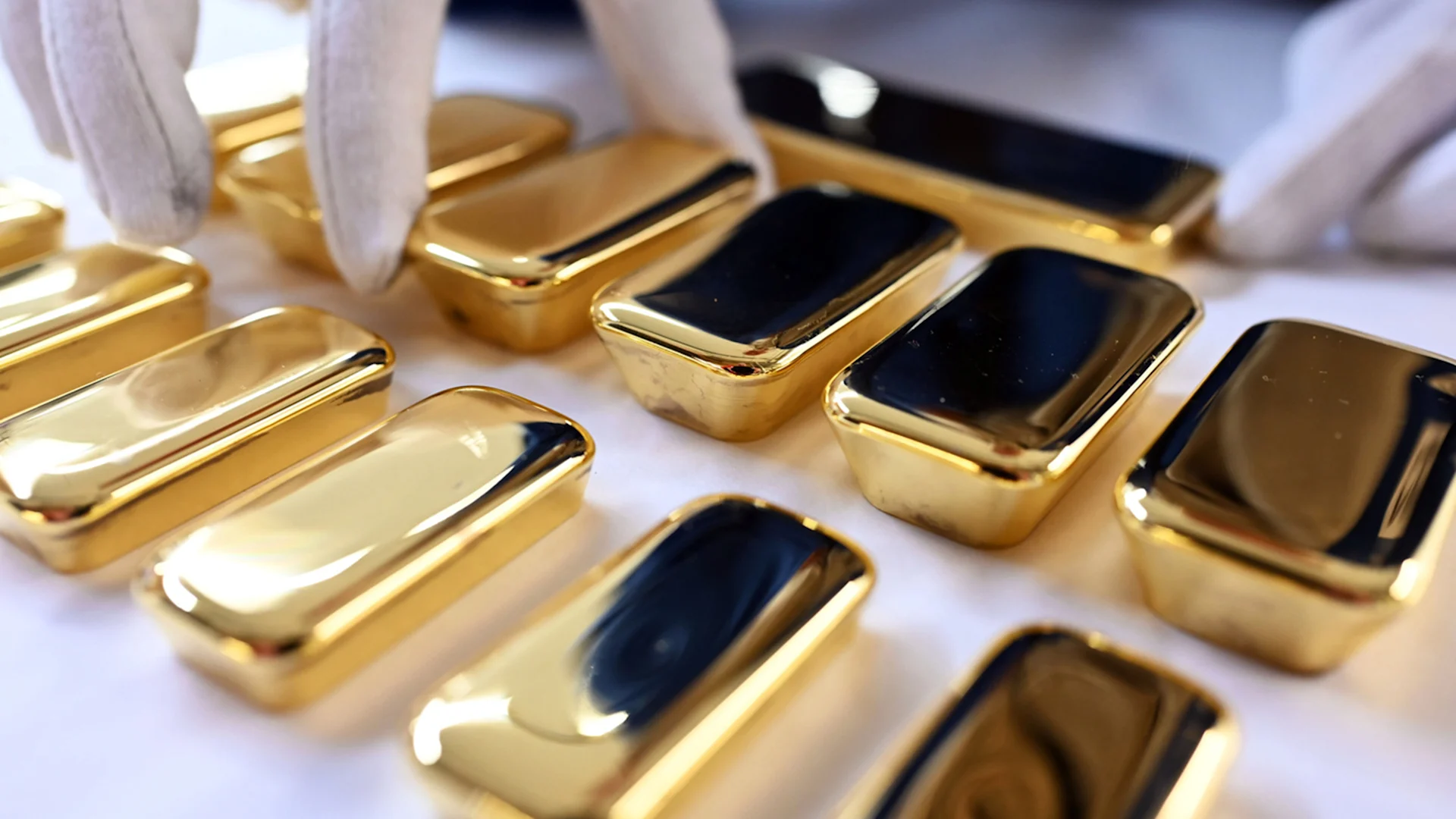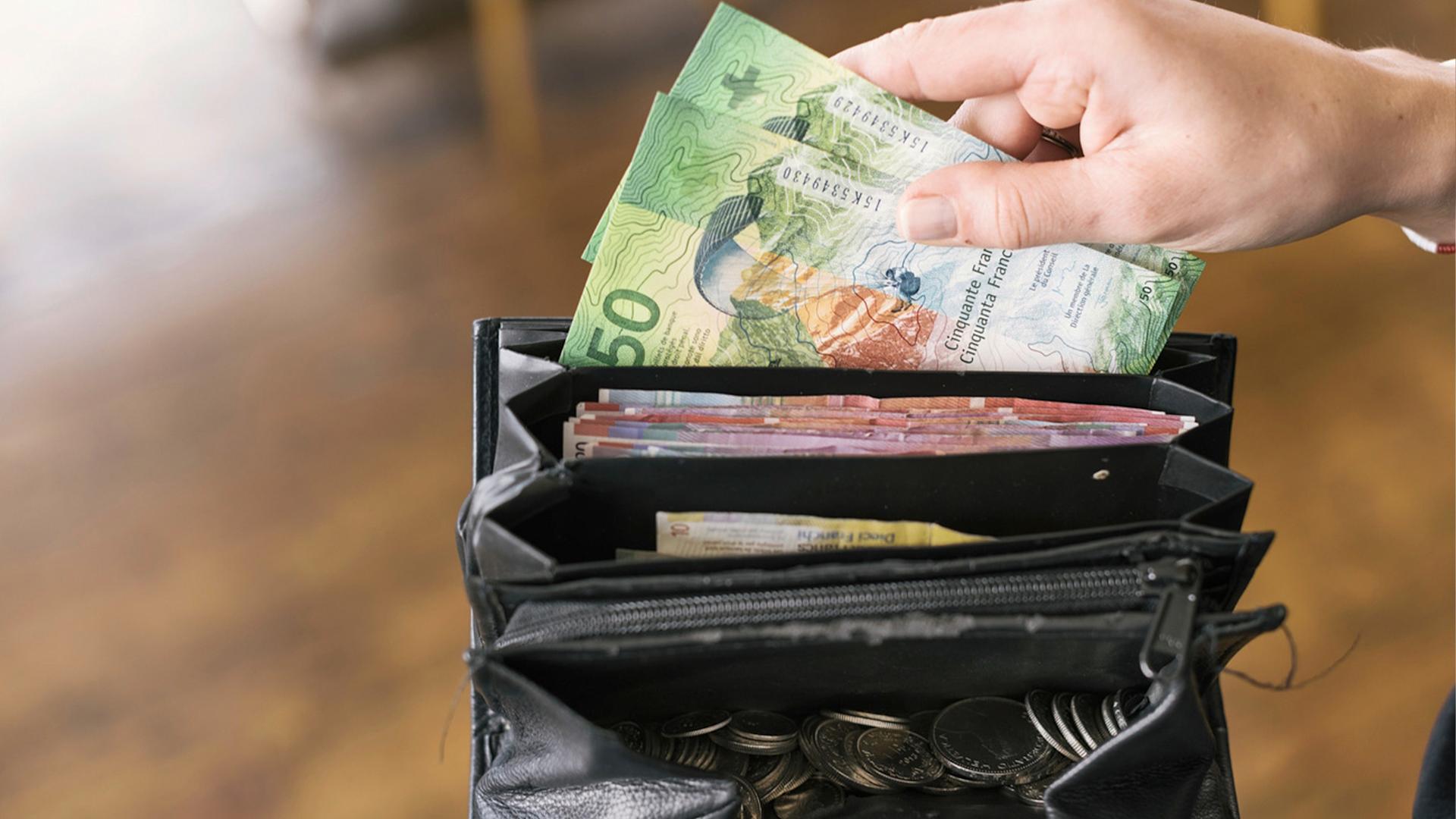
Migros Bank
What does 2026 have in store on the stock market?
If the AI bubble bursts, will the gold price rise even higher? Sacha Marienberg ventures a forecast for 2026.
navigation

Cash facts
Banknotes and coins are increasingly losing out to digital means of payment – but they are far from dead. How much cash do we still keep in our wallets, and when do we need it?
of all payments in physical stores are made with cash – that is 19.6% less than in 2019. The coronavirus pandemic has significantly accelerated the trend towards electronic means of payment. Still, according to Swiss Payment Monitor surveys (see box at the end), cash remains the most popular means of payment in shops, albeit only just ahead of debit cards at 32%. This is followed by credit cards (17.1%) and mobile payments with smartphones (15.1%). Around 50% of all transactions in Migros branches are currently paid for in cash.
Cash is the most common payment method in bars and clubs, making up 66.7%. «This could be due to the fact that electronic means of payment were not accepted in smaller pubs for a long time and that patrons carry enough cash with them in the evening,» says study author Marcel Stadelmann. Bars and clubs are followed by ticket and snack vending machines (52.4%), kiosks and bakeries (48.7%), as well as restaurants (35.8%).
of all payments of up to five Swiss francs are made in cash. For amounts of between five and 20 Swiss francs, cash still accounts for 35.8% of all payments, while amounts between 20 and 50 Swiss francs account for 30%.
That is how much cash use has declined since 2019. Currently, 28.2% of all transactions are still conducted using cash. In the same period, the use of mobile payments has increased from 2.9% to 21%. Even smaller amounts are increasingly paid by smartphone these days. The most frequently used means of payment overall is the debit card, which accounts for 28.5%. The traditional credit card comes in fourth place, behind mobile payments (16.2%).
That is how much cash we currently keep in our wallets, on average. In the previous survey in November 2022, it was still 107 Swiss francs. At the same time, the percentage of people who do not usually carry cash fell from 15.8% to 12.7%. According to study author Marcel Stadelmann, the trend could also be related to the removal of ATMs: «Cash withdrawals are becoming less frequent, but larger amounts are being withdrawn.»
That is how much cash we keep at home on average these days. Six months earlier, it was still 831 Swiss francs. It is worth noting that when the survey was conducted in November 2022, the amount of money held had increased by a whopping 307 Swiss francs. «Fearing an energy crisis in winter, some people may have stocked up on more cash,» says Marcel Stadelmann.
That is the value of Swiss banknotes in circulation in June 2023. Overall, the amount of banknotes in circulation is declining: a year earlier, the value was still just under 90.6 billion Swiss francs. That is because more and more private individuals and businesses are bringing their cash back to the banks because savings accounts are earning interest again.
of Swiss people reject the abolition of cash. That percentage has increased by 5.1% compared to the last survey. Those most in favour of abolishing cash are people between 30 and 44 years old (23.3%).
of the people of Ticino do not usually have any cash in their wallets. That makes them among the most cash-averse people in Switzerland. The percentage is 19.2% in French-speaking Switzerland and 14.2% in German-speaking Switzerland. The people most likely to be out and about without cash are 18 to 29-year-olds (24.1%), but this is true of only 3.5% of people over 60.
In terms of all transactions, Switzerland is one of the countries in Europe with the lowest use of cash. This is the conclusion of another study: according to the European Central Bank, in 2022 Switzerland had a cash share of 32% for payments in physical shops, just behind Finland and Holland, which came in at 20%. In Germany, by contrast, 63% of transactions were still conducted with cash, in Italy as much as 69% and in Austria 70%.
The current number of ATMs in Switzerland. The number increased almost steadily until 2020: from 5,375 ATMs in 2005 to 7,179 in 2020. But since then, ATM density has been declining throughout Switzerland. Migros Bank, however, has expanded its network of ATMs in recent years. In addition, customers can withdraw money free of charge at the cash registers of more than 1,500 Migros stores.
of all respondents have withdrawn cash at a cash register at least once. Debit and credit cards are most commonly used for this purpose.
The most common note in Switzerland is the 100-franc note, accounting for 27.6% of all bank notes in circulation. In terms of total value, the 1,000-franc note takes the top spot. Although it only makes up 9% of all banknotes, it accounts for 54.4% of the total note value. This translates to just under 50 billion Swiss francs. The 100-franc note, on the other hand, has a note value of only 15 billion Swiss francs.
That is the thickness of a bundle of 1,000-franc notes worth one million Swiss francs.
Whether you’re interested in science, sustainability, health or saving money – our team of experts is on hand with practical tips and tricks.